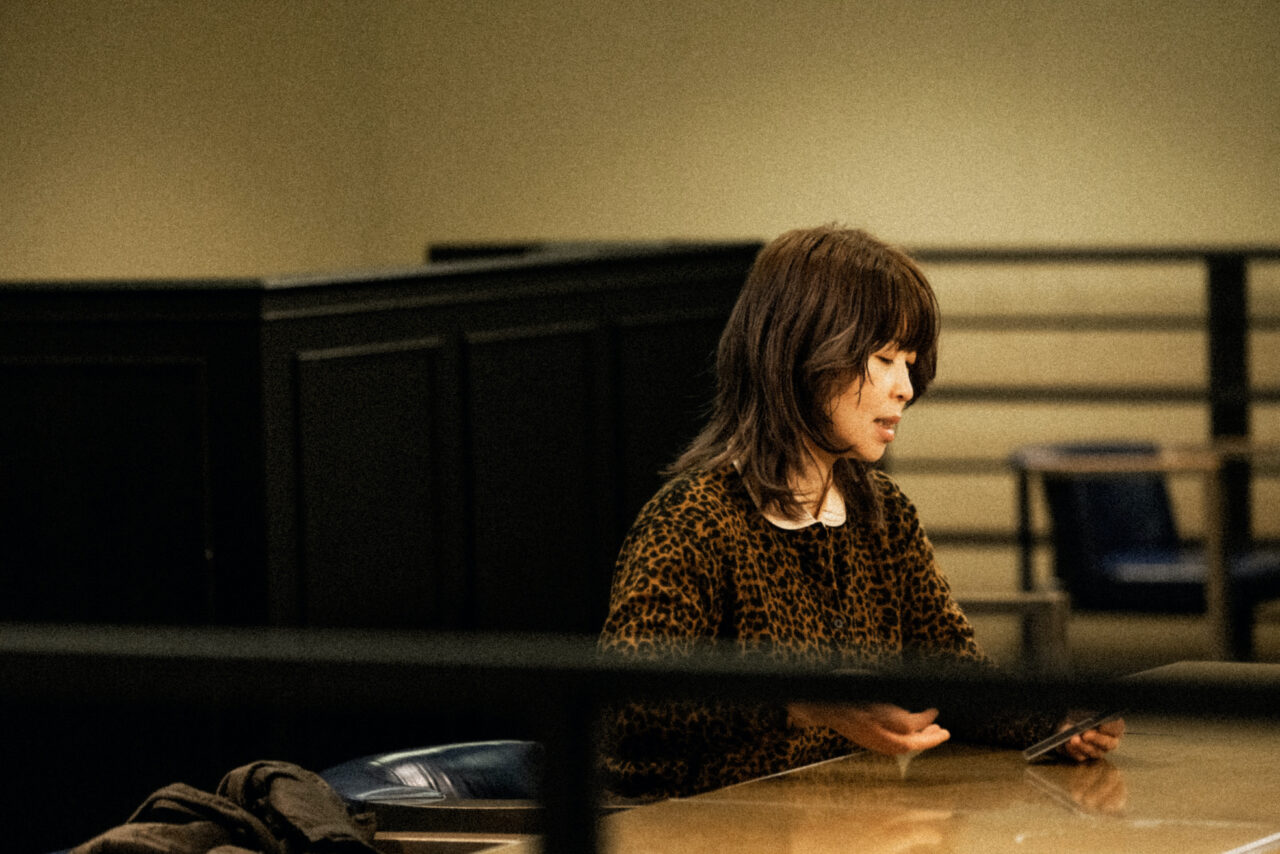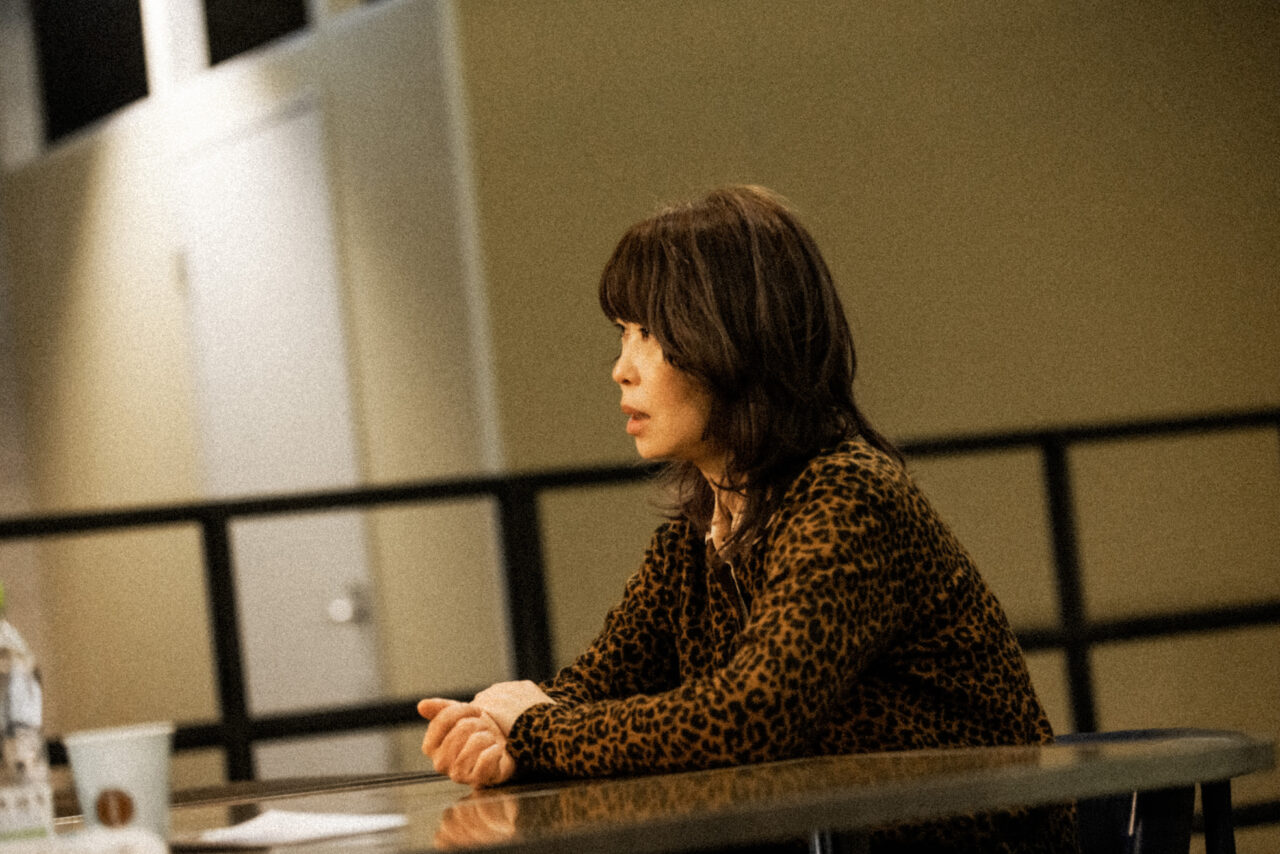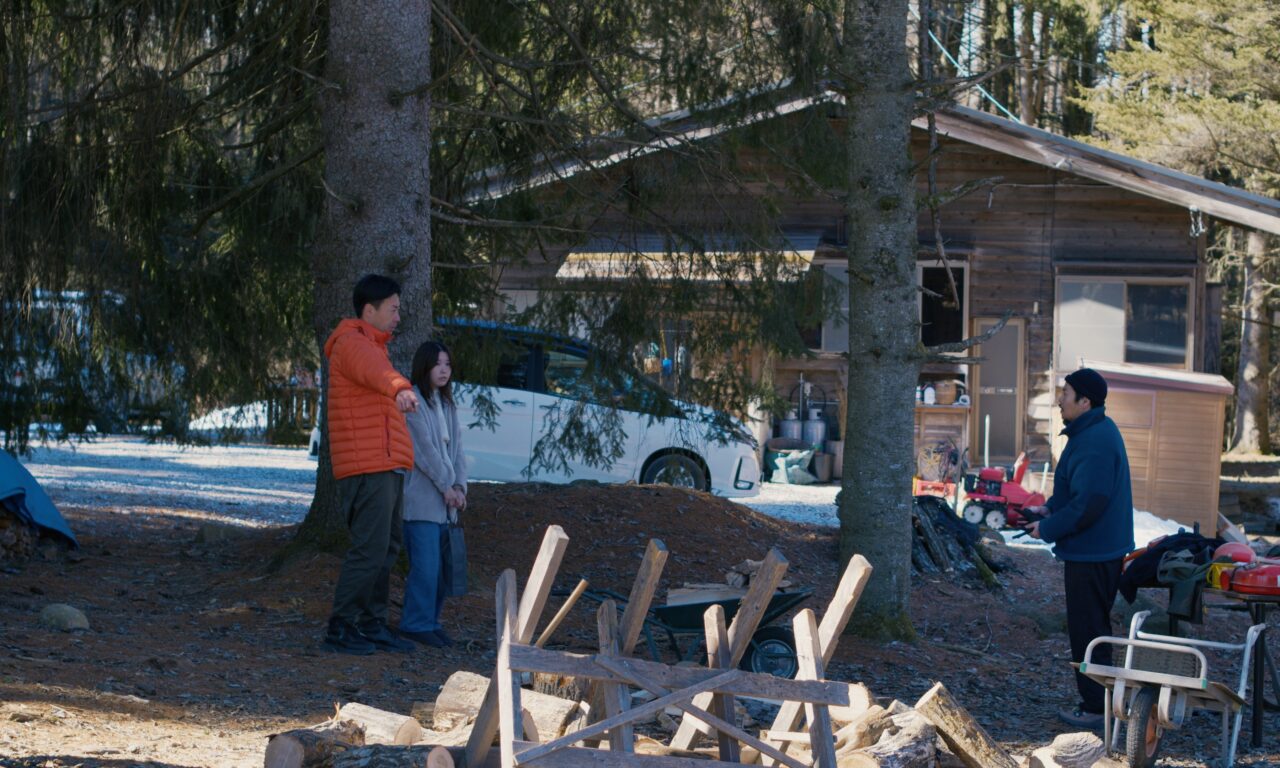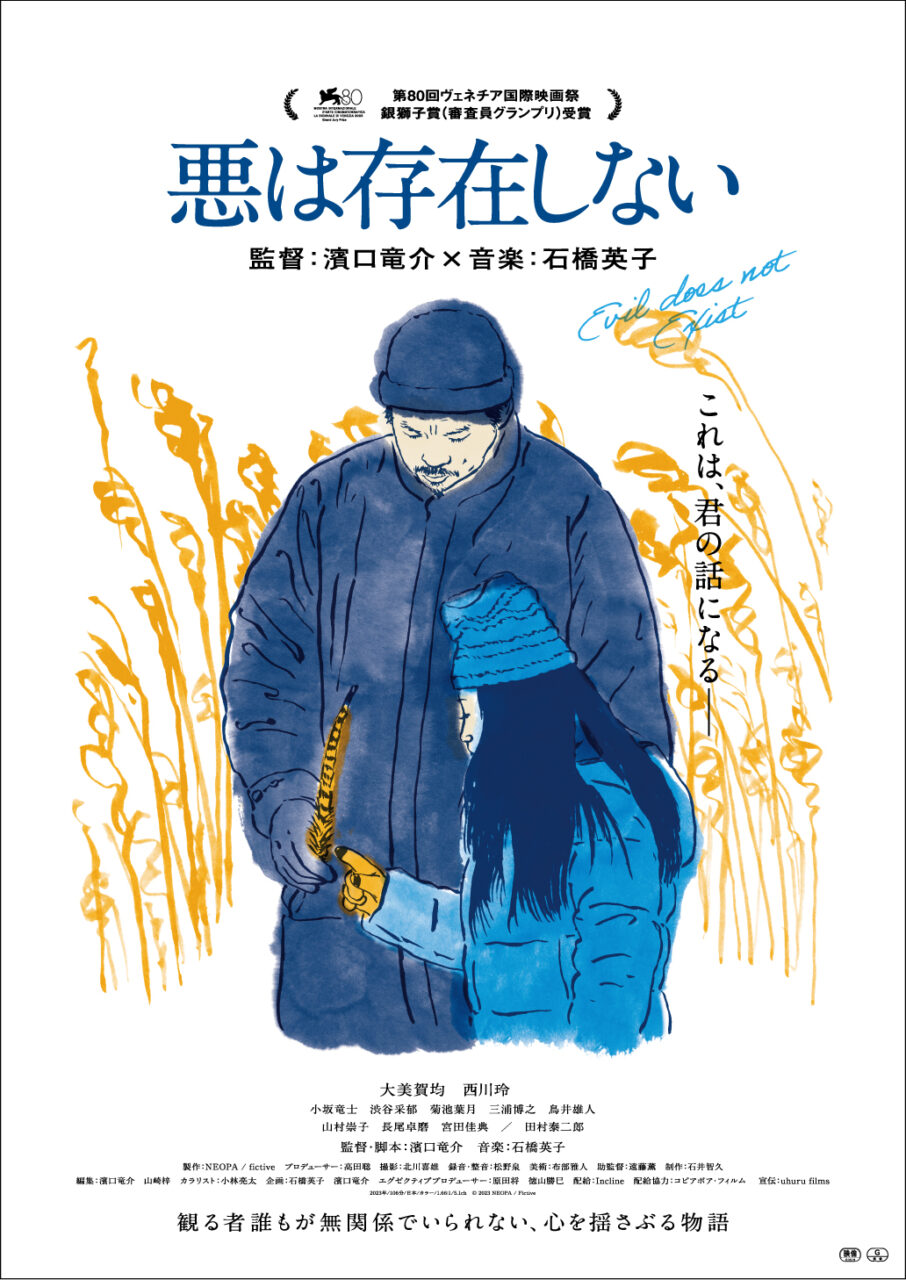“It’s a miracle,” exclaimed musician Eiko Ishibashi joyfully. She offered filmmaker Ryusuke Hamaguchi to accompany her live performances with projected visuals. As the project for ‘GIFT’ took shape, so did the film ‘Evil Does Not Exist’ — in this “miraculous” process, there seems to be a subtle inquiry into us, the shapers of culture, much like the wild deer lurking deep in the woods in both ‘GIFT’ and ‘Evil Does Not Exist.’
With voice and sound, Ishibashi’s music in the film ‘Evil Does Not Exist’ won the Silver Lion at the 80th Venice International Film Festival and is set for nationwide release on April 26th. ‘GIFT’ has also been performed domestically and internationally, with Ishibashi’s remarkable performances rivaling silent films, leading audiences into uncharted territories and garnering acclaim. Amidst this ever-changing process, we caught up with Ishibashi for a conversation.
INDEX
Contemplating Lost Landscapes: Embarking on a “Journey” with Director Ryusuke Hamaguchi
-The film ‘Evil Does Not Exist’ and ‘GIFT’ are filled with a stimulating relationship between music and visuals, but it seems that ‘GIFT’ was initially conceived as a project.
Ishibashi: It all started when an overseas promoter asked me if I was interested in doing a live performance together with video. Recently, there have been many events overseas where musicians perform along with video images. There are a number of venues for such performances, and in fact this time I have been performing ‘GIFT’ in Europe and other places in Japan and abroad, but the locations really vary.
The other day, when we performed in a so-called cinema complex, everyone was eating snacks and opening beer [laughs]. On the other hand, sometimes we perform in a very solemn theater. As a performer, the size of the screen differs depending on the venue, so the way I see the images changes considerably.

Eiko Ishibashi
She engages in various activities including producing electronic music, composing music for stage performances, films, and exhibitions, singer-songwriter activities, improvisational performances, and producing for other musicians. She has also participated in numerous works and live performances as a performer.
-The project ‘GIFT’ launched in response to the recent overseas trend of many such events.
Ishibashi: When I received an inquiry from overseas, what immediately came to mind was a live performance with abstract images. However, although I had seen many such works, the idea of doing it myself didn’t really come to mind.
In addition, making a video requires the participation of many people and costs a lot of money. Therefore, I felt that I wanted to create something that could be performed live on an ongoing basis. What I came up with was a “video with a story,” like the movies that I have been familiar with my whole life. I thought that with such images, I would look different each time and the performance would not be the same.

-How did the project develop after that?
Ishibashi: I approached Hamaguchi around the end of 2021, after the summer of 2021, when ‘Drive My Car’ was winning awards at various film festivals and he was traveling around overseas. I think it was around the time when “Wheel of Fortune and Fantasy” was released in December. The reason why we asked Hamaguchi to make the film was, of course, because of his experience with ‘Drive My Car,’ but I also feel that the documentary “Tohoku Documentary Trilogy” (directed by Kou Sakai and Ryusuke Hamaguchi) was a major factor in my decision to ask him.
-This film focuses on the “narratives” of the victims of the Great East Japan Earthquake, doesn’t it?
Ishibashi: I was drawn to this film because I felt a kind of pre-disaster landscape rising up. I myself have a strong interest in “lost landscapes,” and I had previously made an album about the history of Manchuria called “The Dream My Bones Dream” (2018), inspired by photographs of my own father and grandfather.
-The album originated from the fact that your grandfather worked for an electric company in Manchuria, and your father, who is his son, returned from there.
Ishibashi: I have always been interested in themes that are sometimes connected to science fiction, such as flashbacks of people who were traumatized by the war and are brought back to the war, and lost memories. Hamaguchi is working on a work that is related to exactly such themes. I thought we could have a very fulfilling “journey” together if I asked him to make a video of a live performance.
INDEX
Dust as Musical Motif and Collaborating with the Filmmaker
-What was it like for you two to begin this “journey” through a series of detailed discussions?
Ishibashi: For that, I can refer to the email Mr. Hamaguchi sent to me. Please wait a moment (and she flicks to a nearby smartphone).
-What kind of email is it?
Ishibashi: (coming back to her seat) Even I can’t help but chuckle at the thought of myself writing such a thing in an email. It was December 22, 2021, when I first spoke to Hamaguchi about the video and live performance project. At the end of that month, I told Hamaguchi what I thought about the “memory of the land.
As for the story I mentioned earlier about Manchuria, I shared some vague thoughts with Hamaguchi, such as, “The land originally had the lives of the people who lived there, and that was lost as development centered around the South Manchuria Railway (Mantetsu) progressed—so I was thinking about what the map looked like before Manchuria became symbolized as Manchuria.”
-You guys shared many ideas together.
Ishibashi: It seems I was talking about novels by science fiction writers like Philip K. Dick or perhaps Kurt Vonnegut for instance, works such as “Slaughterhouse-Five,” which is based on Vonnegut’s experiences during World War II, particularly the bombing of Dresden. During these discussions, in May 2022. Hamaguchi recommended a film titled ‘Staub’ (2007) directed by Hartmut Bitomsky.
-That’s an unique documentary portraiting from everyday dust to dust from terrorism and war, and even cosmic stardust
Ishibashi: I also spoke with you in 2013 when I was in charge of music for a performance of Rainer Werner Fassbinder’s play “Trash, the City, and Death,” for which I was also the film director. After those exchanges, in July 2022, Hamaguchi headed to the garbage factory.
-Wow, he visited there right away.
Ishibashi: In August 2022, I created a demo with ‘dust’ as one of the themes. In November, Hamaguchi-san and others came to the studio in Kobuchizawa, Yamanashi, where I was. Coincidentally, Shun Ishiwaka, Jim O’Rourke, Marty Holoubek, and I were having a session, and they filmed the scene. Later on, they showed us an experimental montage of classic film footage with our music layered over it.
While watching this, I told Hamaguchi that it would definitely be interesting if he made a dramatic film as he always does, instead of focusing on the music as he does in music videos. From there, we proceeded from research to scriptwriting, shooting from February to March 2023, and editing the film and creating the music from April to May 2023.

-The film and music would exist independently of each other, and would be better when combined as a live performance. While the film editing of ‘GIFT,’ which was the beginning of the project, preceded the creation of the music, it seems that ‘Evil Does Not Exist,’ which was conceived later as a version with voices, came first. In fact, when we listen to the music of ‘Evil Does Not Exist,’ there are some very impressive tracks, such as one with multiple string recordings and one with ambient sounds.
Ishibashi: The electronic music and other tracks were created around the theme of “dust,” even before there was a script or anything like that. It was when Hamaguchi visited a garbage dump. I made about four or five songs based on this theme and handed them over to him. He selected some from those and polished them up, and those are the ones actually used in ‘Evil Does Not Exist.’
On the other hand, I composed two string tracks. One was created after the script was completed, based on unedited footages, while the other, which eventually became the main theme, was composed after watching edited footage. After viewing the edited material, I sensed something like Hamaguchi’s “anger,” and that’s how the main theme, repeated several times throughout the play, came about.
Takumi (Hitoshi Omiga) and his daughter Hana (Rei Nishikawa) live in Mizuhiki-cho, Nagano Prefecture. One day, they come up with a plan to build a glamping site near where they live. It was planned by an entertainment agency, which was hit hard by the Corona disaster, with a subsidy from the government. Takumi and the other townspeople are upset by the plan, which could pollute the forest environment and the town’s water supply. Unlike ‘GIFT,’ this is not a silent film.
-Does his concept of using sound to provide feedback on “anger” contribute to the complexity of the layers in the main theme’s music?
Ishibashi: You could say so. The fact that I wanted to mix in a bit of dissonance may be due to the complexity I sensed from the images and the story, as well as Hamaguchi’s “anger”.
-There are many beatless tracks this time, aren’t there?
Ishibashi: I knew in advance that we were going to shoot nature, so I wanted to use organic music rather than music with a steady rhythm.
INDEX
Disconnecting the Audience from Mental Inertia. The Ideal Relationship between Visuals and Music
-What kind of film music has inspired you in the past?
Ishibashi: Most of the Fassbinder films I mentioned were composed by a composer named Peer Raben. He has composed a lot of music for these scenes. There are a lot of songs that make you think, “Why are they putting this kind of music on this scene?” [Laughs.] Like, a bad guy is lying down in his room, and there is a very dramatic music playing.
A booklet authored by Eiko Ishibashi, containing a piece discussing Peer Raben within “Ulrike Ottinger’s Berlin Trilogy.
– “Why this song here?” [laughs].
Ishibashi: Yes, [laughs]. But it pulls the viewer away from stopping to think and forces him or her to confront the film. It is a departure from the theory that “this kind of music should be used for this kind of scene,” which is a theory that both the viewer and the creator have. Of course, it is tiring to listen to such music all the time, but I think it is great to encounter such moments in a film. Of course, it’s exhausting to listen to all that music, but I think it’s great to see a film where you can encounter such moments.
-I think it’s a tension between the images and the music.
Ishibashi: I am attracted to the fact that the music does not follow the emotions of the characters, nor is it related to the behavior of the main character, but rather it flows independently from the film and makes you wonder “where is this music coming from?
In the first place, there is no music in the world of the film, so I think it is a very good way to make the music sound as if it exists in an unnatural way. To begin with, there is no music playing in the space where the man is sleeping [laughs]. So, music that makes you think, “What the heck? [laugh]. So I think it’s okay to have music sometimes that makes people think, “What the heck?”
-So you are saying that it is okay to have a moment when you are surprised by music.
Ishibashi: Jean-Luc Godard has also employed such use of music, and Ennio Morricone in Sergio Leone’s films is truly remarkable. ‘Once Upon a Time in the West,’ a Western film from 1968 (known in Japan by the title ‘Western’ in its shortened version), features a haunting melody with the harmonica that can evoke trauma just by hearing it. More recently, Todd Haynes’ ‘May December’ (scheduled for release in Japan in 2024) also featured a very intriguing use of music.
-There is a scene in ‘Evil Does Not Exist’ where you use a song that comes in through guttural noise.
Ishibashi: I was surprised and very happy because I did not expect you to use it like that. Hamaguchi edited the opening scene where the cymbals lead to the guitar and strings. The cymbals and guitar are one piece of music, but the strings are a separate piece. So Hamaguchi connected them in the editing stage.
-That’s amazing.
Ishibashi: When I saw the opening for the first time, I said to myself, “Yay! I was so happy [laughs]. Actually, I asked Jim O’Rourke to play the guitar based on his impression after listening to the string piece. I then added the cymbal sound to it and made it into one piece, and gave the data to Hamaguchi separately from the string piece. Then he was able to connect them in that way.
INDEX
Rediscovering Filmmaking: A Sense of Achievement for Ishibashi
-Hamaguchi’s reversal of the process was quite striking. Ishibashi, did you feel a significant sense of achievement when you composed the score for ‘Evil Does Not Exist’?
Ishibashi: Yes, I felt that this project had settled down once and for all [laughs]. In the process of making the silent ‘GIFT,’ Director Hamaguchi told me that he wanted to make a sound version of ‘Evil Does Not Exist,’ and I was very happy when I found out that we were actually able to make it. It was really unexpected, and I was surprised that such a thing could happen, and that it was a miracle of production.

-It is something that rarely happens, isn’t it?
Ishibashi: It would not have been possible without the trust of all the performers and staff. It would never happen in a big project that requires the approval of people in various positions to start a project with little idea of what is to be made in the first place, and then to end up making not only a silent version but also a sound version. So I was happy and said, “It’s like a miracle, it’s kind of a reward,” and I worked on the music for ‘Evil Does Not Exist.’ I was so satisfied with that, I immersed myself in that work to the point that the live performance of ‘GIFT’ once became unimportant [laughs].

-On top of that, the still exciting ‘GIFT’ is also underway in Japan and abroad.
Ishibashi: The music used in ‘Evil Does Not Exist’ will be combined with newly recorded and improvised performances, changing each time. The material we prepare in advance is also changed in various ways, including new recordings for each performance.
The video footage of ‘GIFT’ is strangely connected in chronological order, and I think it is mainly due to the work of Azusa Yamazaki, who edited the video, but no matter how many times I watch it, I cannot remember what cut comes after what cut [laughs]. As I mentioned at the beginning of this article, the way you see the live performance changes dramatically depending on the venue, so perhaps I myself enjoy the live performance the most.
-Do you think there is a big difference between your usual musical activities and this series of experiences?
Ishibashi: Discovering that the improvisational sessions we’ve had as a band could translate to the visual team was truly exhilarating. It felt akin to navigating through darkness together, unsure of what we were crafting, but pushing forward with a sense of uncertainty, coupled with reassurances like “Are we okay?” and “It’ll work out, won’t it?” [laughs]. It brought back memories of my past aspirations to make films as a student, yet ultimately abandoning them.

–What do you mean by that?
Ishibashi: I gave it up because it costs a lot of money and you have to deal with a lot of people to make a film [laughs]. I was happy to find that I could co-create with people in the field of “film,” which is basically characterized by its large scale, in a small-scale relationship like that of a band.
Of course, it was not possible with just anyone, but with Mr. Hamaguchi, who works harder than anyone else behind the scenes and is able to create an enjoyable environment with a charming personality that attracts people. It is also a long-awaited project, as if more than two years have passed since the first email. It is a miracle to be able to share such a production process with so many people, which is moving forward with no answers.

‘Evil Does Not Exist’

April 26 (Fri.) at Bunkamura Le Cinema, Shibuya Miyashita, K2, and other theaters nationwide
Director/Screenplay: Ryusuke Hamaguchi
Music: Eiko Ishibashi
Production: NEOPA / fictive
Producer: Satoshi Takata
Planning: Eiko Ishibashi, Ryusuke Hamaguchi
Executive Producer: Masaru Harada, Katsumi Tokuyama
Cast:
Hitoshi Omika
Ryo Nishikawa
Ryuji Kosaka
Ayaka Shibutani
Hazuki Kikuchi
Hiroyuki Miura
Yuto Torii
Takako Yamamura
Takuma Nagao
Yoshinori Miyata
Taijiro Tamura
Distributor: Incline
Distribution cooperation: Copiapoa Film
Publicity: uhuru films
2023 / 106 min / Japan / Color / 1.66:1 / 5.1ch
© 2023 NEOPA / Fictive


























